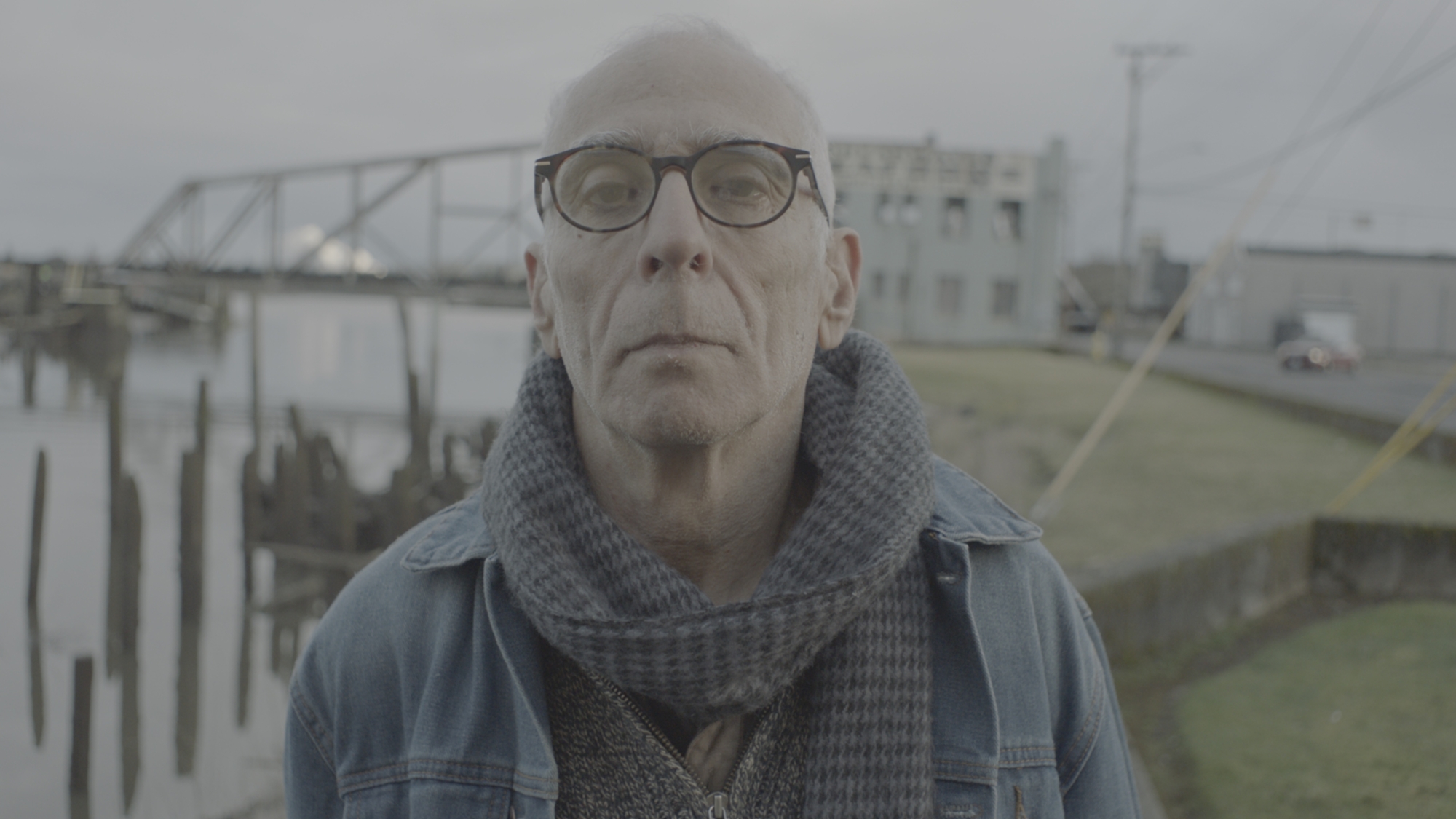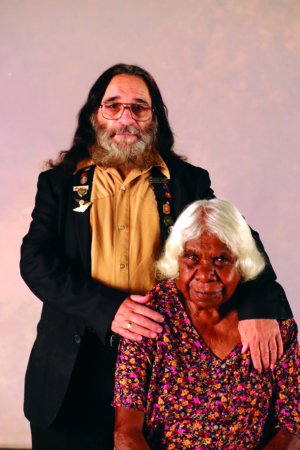Amiel Courtin-Wilson’s documentary Man on Earth (2022) is an extraordinary film. One would be tempted to describe it as ‘confronting’ were it not so gentle and lyrical in its approach. The potentially confronting element for some viewers is its subject matter: shot in Aberdeen, Washington, across the first half of 2019, the film follows Bob Rosenzweig’s final months and days as he readies himself for assisted suicide.
From its opening moments, Man on Earth refuses any recourse to easy sentimentality. Bob, aged sixty-five, himself sets this tone; visibly suffering all the pain and frustration bequeathed to his bodily functions by Parkinson’s disease, he stares right down the barrel of the camera lens and gives us his twin mottos: ‘Fuck it’ and ‘It is what it is’. Which is to say: he accepts the fact of his condition, but he is not willing to hide or underplay his volatile emotions in the face of it.
Man on Earth is largely silent on the question of any possible afterlife. Its aim is to let us closely observe, and become emotionally and empathetically involved with, Bob’s death as a material, earthly experience.
With those around him – especially his adult son Jesse, who serves as his principal carer – Bob can be demanding, brusque, difficult, and suddenly distant and uncommunicative. His mood can alter in a split second. Yet he is also driven by an overwhelming need to affirm his love for the central people in his life, and to share – through whatever means possible – precious moments with them during these final days ‘on Earth’.
Man on Earth is not an explicitly religious or spiritual film, and is largely silent on the question of any possible afterlife. Its aim is to let us closely observe, and become emotionally and empathetically involved with, Bob’s death as a material, earthly experience. It is the record of a peaceful and fully chosen ‘passing away’ from mortal consciousness. Nonetheless, I found myself recalling, at its conclusion, a line from Sam Peckinpah’s classic, autumnal western Ride the High Country (1962) that is savoured by cinephiles of several generations: ‘All I want is to enter my house justified.’[1]Spoken by Steve (Joel McCrea).
This mention of one of cinema’s masterpieces prompts a long detour, which I will dare to take in order to weigh the full measure of Man on Earth’s achievement within a broad context of cultural attitudes to – and cinematic depictions of – death and dying.
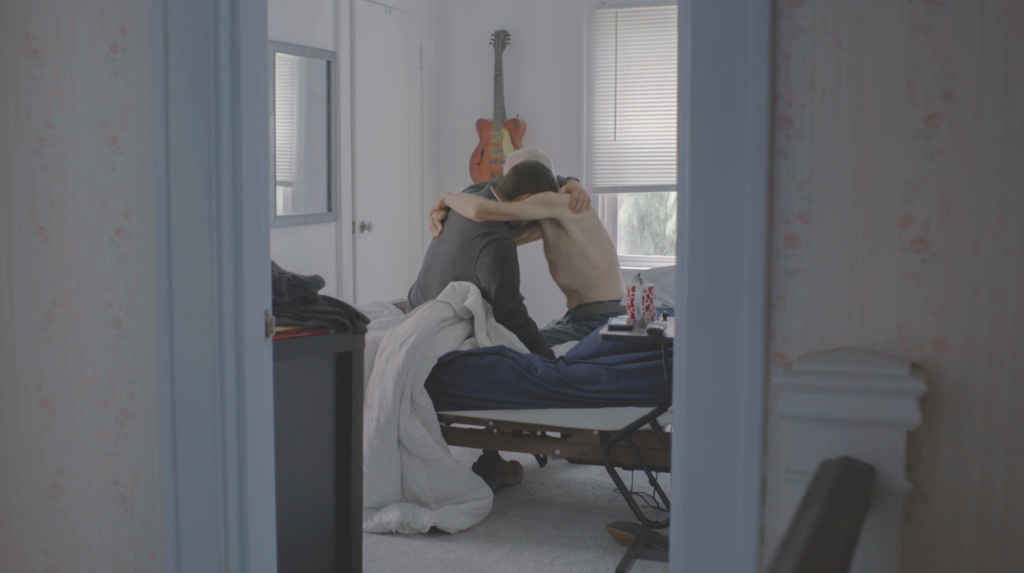
A Godardian détour
The writing of this essay about a film on the topic of assisted suicide happened to coincide with a widely publicised instance of this very practice: the death at the age of ninety-one of celebrated Swiss-French filmmaker Jean-Luc Godard, whose wish to die by these means was carried out at his home, in Rolle, Switzerland, on 13 September 2022.[2]See Angelique Chrisafis, ‘Jean-Luc Godard Chose to End Life Through Assisted Dying, Lawyer Confirms’, The Guardian, 14 September 2022, <https://www.theguardian.com/film/2022/sep/13/jean-luc-godard-chose-to-end-life-through-assisted-dying-lawyer-confirms>, accessed 1 November 2022.
Public reactions (on social media and elsewhere) to this particular aspect of Godard’s biography ran the predictable gamut from philosophical admiration to angry bewilderment. Some referred to the fact that suicide had figured prominently for the fictional characters in his films; others pointed to the director’s own statements, scattered over the preceding decade, that he was carefully researching and considering assisted suicide as an option for himself.[3]See, for example, Jean-Luc Douin, ‘Jean-Luc Godard’s Enduring Love Affair with Death, on Screen and in Life’, Le Monde, 14 September 2022, <https://www.lemonde.fr/en/culture/article/2022/09/14/jean-luc-godard-s-enduring-love-affair-with-death-on-screen-and-in-life_5996967_30.html>, accessed 2 November 2022.
Official statements from Godard’s associates, as they came to us in slightly mangled English translation, declared that he felt ‘exhausted’ (épuisé, or ‘worn out’, ‘at the end of his rope’), his body was ‘tired’ (fatigué) and he ‘could no longer live normally, due to various pathologies’.[4]These statements are drawn (and translated by myself) from two news sources: ‘Sa décision: Jean-Luc Godard a eu recours au suicide assisté: “Il n’était pas malade, il était simplement épuisé”’, Libération, 13 September 2022, <https://www.liberation.fr/culture/jean-luc-godard-est-mort-20220913_LLEGXZFQSFDC3FBJCP7AWXSYWI/>; and ‘“Le corps était fatigué. Il ne suivait plus”: Jean-Luc Godard a eu recours au suicide assisté’, Le Temps, 13 September 2022, <https://www.letemps.ch/culture/corps-etait-fatigue-ne-suivait-plus-jeanluc-godard-recours-suicide-assiste>, both accessed 2 November 2022. Above all, Godard had made clear, both to occasional interviewers and to those closest to him, that he did not want to spend an unpredictable number of years in a state of bodily and/or mental deterioration, simply waiting to expire and becoming increasingly dependent on others, but wished to take control of the dying process while it was still possible for him to do so.[5]‘Sa décision’, ibid. As we see in Man on Earth, the same self-determination applies to Bob.
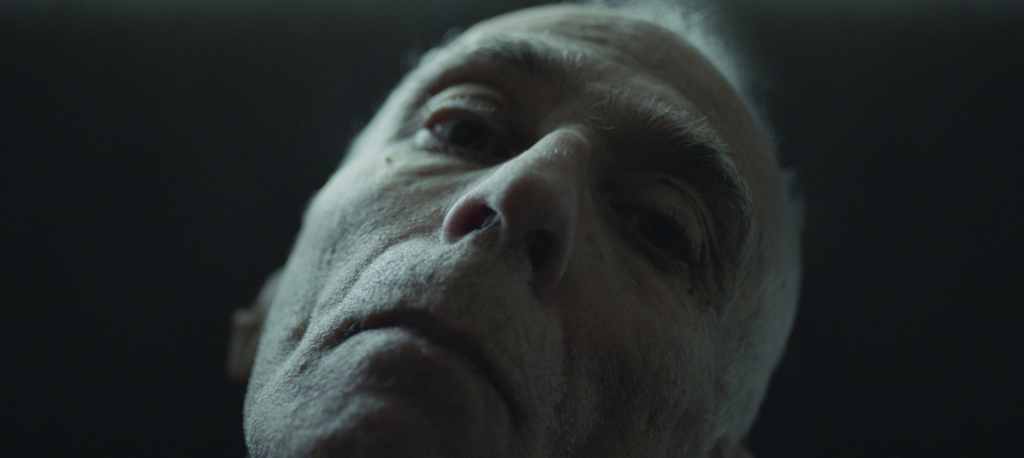
Beyond the specific case of Godard, it is easy to confuse terms and issues that are intricately interrelated but also subtly distinct. As the UK’s National Health Service defines it, euthanasia is ‘the act of deliberately ending a person’s life to relieve suffering’, while assisted suicide is ‘the
act of deliberately assisting another person to kill themselves’.[6]‘Euthanasia and Assisted Suicide’, National Heath Service website, updated 28 July 2020, <https://www.nhs.uk/conditions/euthanasia-and-assisted-suicide/>, accessed 2 November 2022. New Zealand public-policy think tank Maxim Institute makes a related but finer distinction:
Broadly, euthanasia describes the situation where the person who is asking for assistance to die has someone else take the action that leads to their unnatural death (like injecting a lethal drug), and assisted suicide is when the person is prescribed drugs that they must take themselves in order to die.[7]‘Frequently Asked Questions #1 – End of Life Choice Series: What Is the Difference Between Euthanasia and Assisted Suicide?’, Maxim Institute, <https://www.maxim.org.nz/article/faq1-euthanasia-and-assisted-suicide/>, accessed 2 November 2022. The Maxim Institute website contains several clear and useful articles on these topics and their relation to legislation in New Zealand.
The latter scenario is what we witness in Man on Earth, and is presumably also the path that Godard took. In both Switzerland and the state of Washington (as well as parts of Australia), properly medically supervised assisted suicide is legal; in many countries, it is not. This ‘criminal’ aura that has attached itself to the practice of assisted suicide is among the factors that make it a nervous, anxious, somewhat hidden topic in public discussion. Another decisive factor is the fundamental discomfort many feel in talking about – let alone personally facing – the prospect of imminent death of oneself or others, or the all-pervasive, inescapable fact of human mortality.
Above all, there is short-circuiting confusion in the collective imagination between suicide – the taking of one’s own life – and assisted suicide. Countless dramas, and even a vein of black comedy, have accustomed us to consider suicide as variously a lonely, desperate, anguished, impulsive, melancholic, end-of-the-road or out-of-control act.
The many different types and situations of suicide open a flood of conflicting interpretations. Suicide can be considered heroic or sad, an individual sickness or the symptom of a wider social crisis. Sometimes it is taken, in an unsympathetic way, as the indication of a moral failing or personal weakness in the one who commits it; just as often, it is glorified as a near-mythic existentialist act, as was the case in the reception of the suicide of philosopher activist Guy Debord in 1994.[8]See Andrew Hussey, ‘Situation Abnormal’, The Guardian, 28 July 2001, <https://www.theguardian.com/books/2001/jul/28/biography.artsandhumanities>, accessed 2 November 2022.
The relation of suicide to variegated states of depression is, in this context, often poorly understood – and depression itself is open to both individual and social diagnoses. One need only survey the responses to filmmaker Chantal Akerman’s suicide in 2015 ‘after many years of suffering manic-depression’[9]Jon Davies, ‘Every Home a Heartache: Chantal Akerman’, C Magazine, 1 June 2016, <https://cmagazine.com/articles/every-home-a-heartache-chantal-akerman>, accessed 2 November 2022. and being in a frequent state of agitated anger over the state of the world.[10]As conveyed to author in personal correspondence. Or read Franco ‘Bifo’ Berardi’s heartbreaking commentary on the suicide of writer Mark Fisher, his ‘comrade’ who ‘took a leap into the dimension of nothingness’:
Mark Fisher explained his suffering in direct relationship with the way he perceived himself in the other’s sight, and he said he felt ‘good for nothing’. We are hundreds of millions who, like him, are forced to feel good for nothing because we cannot comply with the competitive demands in exchange for which our identity is socially certified […] In order to explain what depression is we need to comprehend impotence, namely the incapability of actualising a potentiality that, although inscribed in our social and erotic being, does not become effective.[11]Franco ‘Bifo’ Berardi, ‘“How Do We Explain Depression to Ourselves?” Bifo Remembers Mark Fisher’, trans. Luca Miotto, Novara Media, 4 February 2017, <https://novaramedia.com/2017/02/04/how-do-we-explain-depression-to-ourselves-bifo-remembers-mark-fisher/>, accessed 2 November 2022.
Berardi stresses the vital importance of ‘hugging, caressing, solidarity’ in any worthwhile attempt to interrelate the personal and political spheres of understanding and experience. ‘The openness of receiving a caress,’ he writes, ‘is not only the condition for individual happiness, but also that of rebellion, of collective autonomy and of emancipation from the salaried work.’[12]ibid. One can posit, extrapolating from these remarks, the larger politics of Courtin-Wilson’s cinema, from its beginnings in Chasing Buddha (2000) through to Bastardy (2008), Hail (2011) and The Silent Eye (2016): he and his collaborators give us, across many different stylistic forms, a similar conjunction of social marginality, creativity, deep and compassionate human connection, and a cry for collective social justice. Man on Earth takes its rightful place in that lineage.
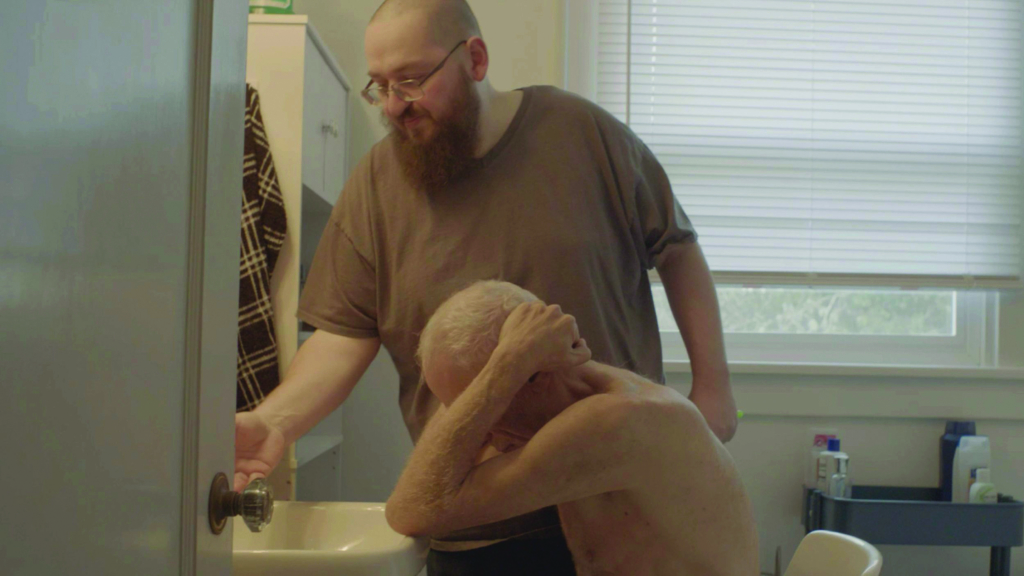
Bob with his son and carer Jesse
A silent eye
What kind of film is Man on Earth, exactly? To what can it be fruitfully compared? It departs from conventional documentary methods in choosing to stick, essentially, with its subject through this final chapter of his life. Where other filmmakers might have made more of the contrast between the Bob who has Parkinson’s and the Bob who once designed bathrooms for music celebrities such as Elton John, Courtin-Wilson and his team provide only a very discreet ‘archival’ component. It is not a film of nostalgic reminiscence, but of living in and through the moment.
Likewise, the filmmakers choose to show in images – and include on the soundtrack – extremely little of their own presence. This is not a documentary intent on showing the whole process of interaction and negotiation between a director and their real-life protagonist, such as the films of Nick Broomfield or Michael Moore often deliver. Such strategic withholding creates certain unstressed questions and mysteries in Man on Earth: for example, one can infer from the closing scenes that not all members of Bob’s family were comfortable with being filmed, and thus are allowed to remain shadowy, unidentified figures.
The net result of all these decisions is that Man on Earth deliberately downplays conventional documentary exposition. The overriding impression is that we are simply ‘with’ Bob as privileged, intimate observers. Courtin-Wilson’s response to our culture’s general defensiveness and evasiveness in the face of death is that, quite simply, we must look right at it and bear witness – without Gothic horror, without undue ‘projection’ of any kind. This closeness of Man on Earth’s cinematic look recalls Frederick Wiseman’s little-screened, near-six-hour documentary masterpiece filmed in a hospital, Near Death (1989).
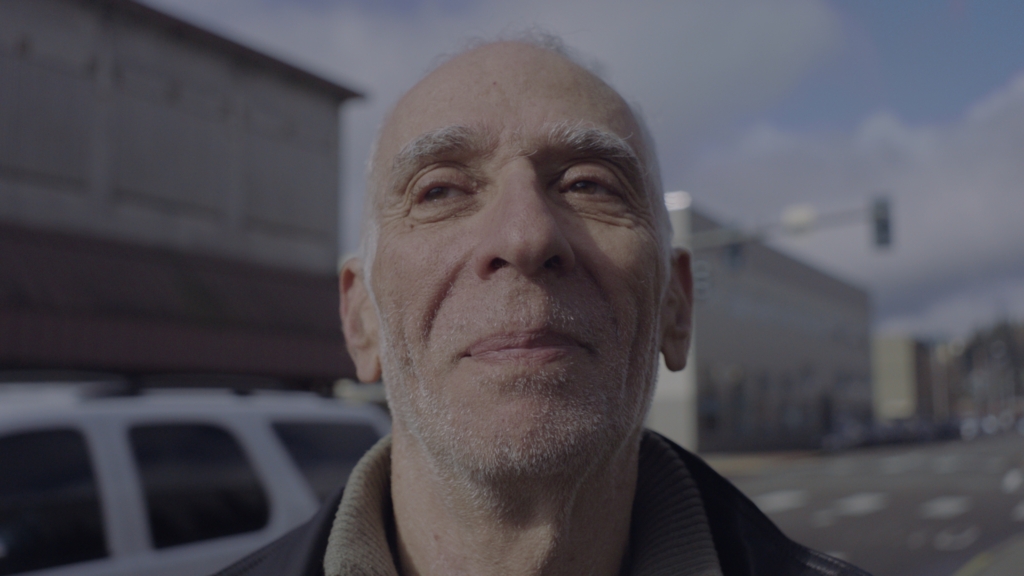
Is this film, then, an instance of so-called ‘fly on the wall’ observational filmmaking, of that much-mystified documentary genre known as cinema vérité? To an extent, yes. But it is also a finely edited (by Peter Sciberras) and modulated piece, elbowing out space and time within its unfolding structure to include, courtesy of cinematographer Jacqueline Fitzgerald, poetic shots of the house and environment around Bob, as well as an atmospheric, non-insistent soundtrack combining the talents of composer Nicolas Becker and sound designer/mixer Robert Mackenzie. On this level, Man on Earth invites comparison with Silverlake Life: The View from Here (1993), a film constructed by Peter Friedman from his friend Tom Joslin’s video diary as Joslin died from AIDS-related illness.
Does Courtin-Wilson sensationalise or in any way exploit Bob’s death by turning it into a screen spectacle for our consumption, our ‘enjoyment’? Is there a ghoulish aspect to this project, the type of morbid ambience that suffuses the portrait that Wim Wenders and Nicholas Ray made of the latter in his last months, Lightning over Water (1980)? There are doubtless some viewers and commentators who will negatively respond to Courtin-Wilson’s film in that way. But there are, to say the least, mitigating factors at play. First, Bob contacted the filmmakers and invited them to document his dying. Second (as conveyed by the director in the film’s publicity materials), he was well aware that there was a suspense factor inherent in the material, with various potential twists and intensifications of emotion along the way; such ‘entertainment’ was not something that he ruled out of bounds or inappropriate.[13]‘About Bob’, 11:11 Film, Man on Earth press kit, 2022, p. 9.
Let’s rephrase the potential objection to Man on Earth in another way: does it turn Bob’s last days into too much of a coherent story, something that feels contrived or manipulated in its final shaping, editing and post-production treatment? Again, I do not believe this would be a fair or accurate critique.
As I watched the film for the first time, I did wonder if Bob’s journey had been rendered by the filmmakers in an overly resolved, neatly tied-up way. I was reminded, in this regard, of the many documentary films in which the director or the principal on-screen subject seeks out their (perhaps long-absent) parents in hope of a full-blown, purging catharsis of ultimate acknowledgement, forgiveness and mutual understanding – a goal that Bob, too, seeks with his family members in Man on Earth. Personal documentaries, including Sarah Polley’s Stories We Tell (2012) and Mark Wexler’s Tell Them Who You Are (2004), sometimes end up revealing the brutal limits of a dream of reconciliation and catharsis.
In some sense, any sympathetic treatment of an individual’s choice as to how they will die – whether in documentary or fiction – can be said to harbour a particular fantasy, which is also an understandable, human wish; death, as we all know, is something that very often escapes our control altogether. It may be sudden, tragic, irreversible, inexplicable. Man on Earth, however, earns and justifies its right – through the unflinching and empathetic character of its gaze, and the complex mood it conjures – to a little piece of this validly utopian fantasy.
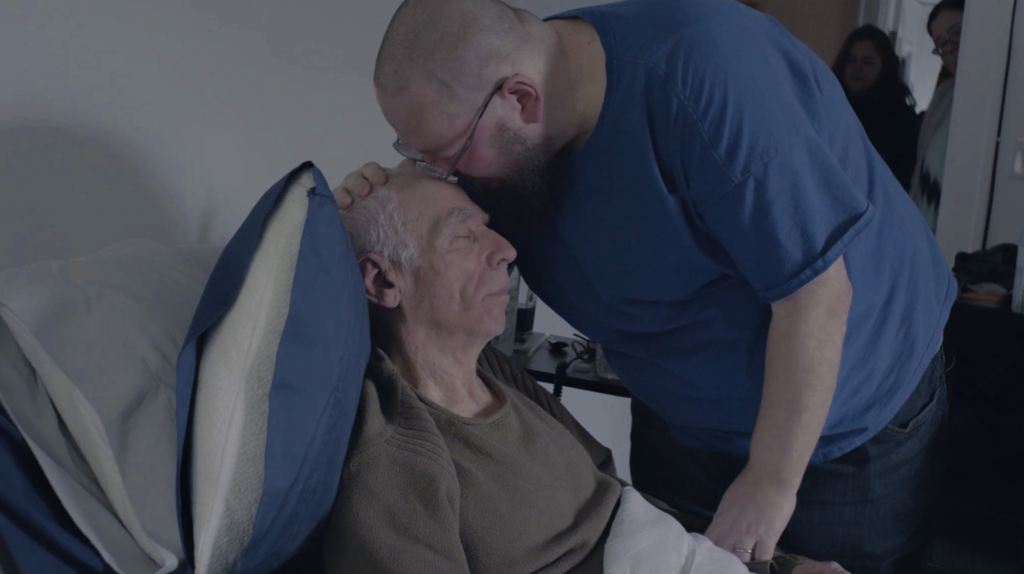
Postscript: Mademoiselle and the Doctor
Man on Earth would make a great double bill with another Australian documentary that is, sadly, too little known or heralded, and that is also about a case of assisted suicide: Janine Hosking’s Mademoiselle and the Doctor (2003). One half of its interwoven trajectory shows the efforts of Philip Nitschke to defend, publicise and practise what he calls ‘voluntary euthanasia’, while the other half offers a portrait of 79-year-old Perth resident Lisette Nigot. Like Godard, Nigot has firmly decided to shuffle off this mortal coil while she still possesses all her faculties. In a splendid moment, she refutes the unsubtle insinuation of her interviewer: ‘Do I look depressed?’ The film slowly and masterfully builds to the encounter of these two people, and to its aftermath.
When first screened on ABC TV – which helped produce the documentary – three scenes of Mademoiselle and the Doctor, in which suicide methods are demonstrated, were suppressed for broadcast. An ABC representative informed Nitschke that the reasons informing the in-house censorship decision were ‘moral’ rather than ‘legal’ in nature.[14]Cited in ‘Newsflash: ABC TV Censors Own Documentary’, media release, Exit Australia, <https://exitinternational.net/docs/censor_pressrel.pdf>, accessed 8 November 2022. When I wrote a review of the unexpurgated cinema version in late 2004, I remarked:
Mademoiselle and the Doctor is a beautifully constructed piece of cinema, with a cumulative emotional effect that is rare in Australian film. I can only speculate that the reason it has not, to date, been more grandly embraced and acclaimed by the local industry is because of the intense discomfort-factor inherent in the subject it broaches, and its refusal to indulge in facile moralising.
But great films invite us to ponder uncomfortable thoughts, and take us to places where, on first blush, we might rather not go. By this criterion, Mademoiselle and the Doctor is indeed a great Australian film.[15]Adrian Martin, ‘Mademoiselle and the Doctor’, Film Critic: Adrian Martin, November 2004, <http://filmcritic.com.au/reviews/m/mademoiselle_doctor.html>, accessed 8 November 2022.
Man on Earth is very different in tone and style to Mademoiselle and the Doctor, but I could use almost exactly the same words today to hail its value and significance.
Endnotes
| 1 | Spoken by Steve (Joel McCrea). |
|---|---|
| 2 | See Angelique Chrisafis, ‘Jean-Luc Godard Chose to End Life Through Assisted Dying, Lawyer Confirms’, The Guardian, 14 September 2022, <https://www.theguardian.com/film/2022/sep/13/jean-luc-godard-chose-to-end-life-through-assisted-dying-lawyer-confirms>, accessed 1 November 2022. |
| 3 | See, for example, Jean-Luc Douin, ‘Jean-Luc Godard’s Enduring Love Affair with Death, on Screen and in Life’, Le Monde, 14 September 2022, <https://www.lemonde.fr/en/culture/article/2022/09/14/jean-luc-godard-s-enduring-love-affair-with-death-on-screen-and-in-life_5996967_30.html>, accessed 2 November 2022. |
| 4 | These statements are drawn (and translated by myself) from two news sources: ‘Sa décision: Jean-Luc Godard a eu recours au suicide assisté: “Il n’était pas malade, il était simplement épuisé”’, Libération, 13 September 2022, <https://www.liberation.fr/culture/jean-luc-godard-est-mort-20220913_LLEGXZFQSFDC3FBJCP7AWXSYWI/>; and ‘“Le corps était fatigué. Il ne suivait plus”: Jean-Luc Godard a eu recours au suicide assisté’, Le Temps, 13 September 2022, <https://www.letemps.ch/culture/corps-etait-fatigue-ne-suivait-plus-jeanluc-godard-recours-suicide-assiste>, both accessed 2 November 2022. |
| 5 | ‘Sa décision’, ibid. |
| 6 | ‘Euthanasia and Assisted Suicide’, National Heath Service website, updated 28 July 2020, <https://www.nhs.uk/conditions/euthanasia-and-assisted-suicide/>, accessed 2 November 2022. |
| 7 | ‘Frequently Asked Questions #1 – End of Life Choice Series: What Is the Difference Between Euthanasia and Assisted Suicide?’, Maxim Institute, <https://www.maxim.org.nz/article/faq1-euthanasia-and-assisted-suicide/>, accessed 2 November 2022. The Maxim Institute website contains several clear and useful articles on these topics and their relation to legislation in New Zealand. |
| 8 | See Andrew Hussey, ‘Situation Abnormal’, The Guardian, 28 July 2001, <https://www.theguardian.com/books/2001/jul/28/biography.artsandhumanities>, accessed 2 November 2022. |
| 9 | Jon Davies, ‘Every Home a Heartache: Chantal Akerman’, C Magazine, 1 June 2016, <https://cmagazine.com/articles/every-home-a-heartache-chantal-akerman>, accessed 2 November 2022. |
| 10 | As conveyed to author in personal correspondence. |
| 11 | Franco ‘Bifo’ Berardi, ‘“How Do We Explain Depression to Ourselves?” Bifo Remembers Mark Fisher’, trans. Luca Miotto, Novara Media, 4 February 2017, <https://novaramedia.com/2017/02/04/how-do-we-explain-depression-to-ourselves-bifo-remembers-mark-fisher/>, accessed 2 November 2022. |
| 12 | ibid. |
| 13 | ‘About Bob’, 11:11 Film, Man on Earth press kit, 2022, p. 9. |
| 14 | Cited in ‘Newsflash: ABC TV Censors Own Documentary’, media release, Exit Australia, <https://exitinternational.net/docs/censor_pressrel.pdf>, accessed 8 November 2022. |
| 15 | Adrian Martin, ‘Mademoiselle and the Doctor’, Film Critic: Adrian Martin, November 2004, <http://filmcritic.com.au/reviews/m/mademoiselle_doctor.html>, accessed 8 November 2022. |
